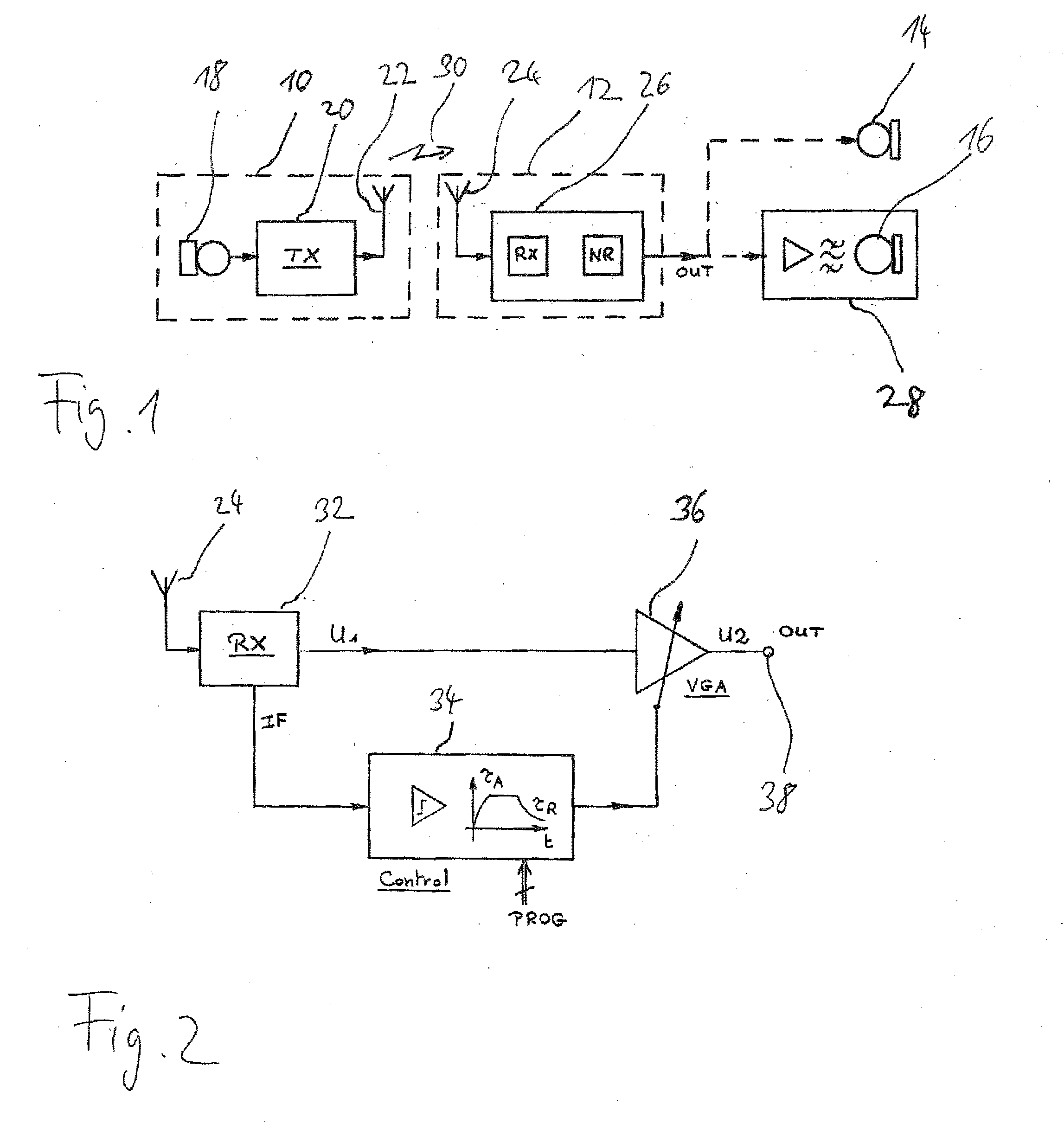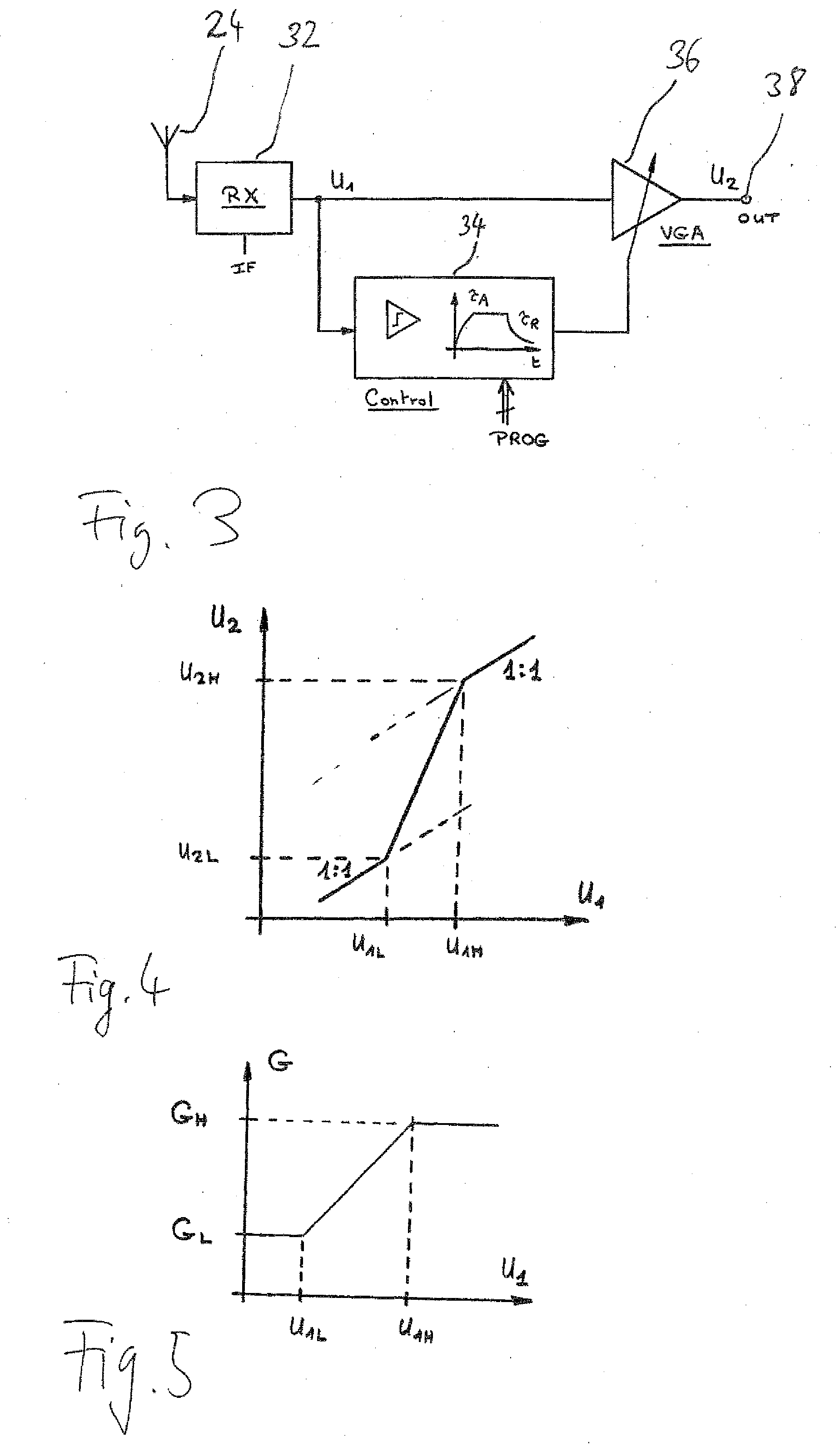Method and system for providing hearing assistance to a user
a technology for providing hearing assistance and user, applied in the field of providing hearing assistance to users, can solve the problems of user's perception of unpleasantness, absence of any perceivable sound during times when the squelch function is active, and user's perception that the receiver does not work properly, etc., to achieve the effect of reducing gain, avoiding distortion of amplified audio signals, and increasing the amplitude of received audio signals
- Summary
- Abstract
- Description
- Claims
- Application Information
AI Technical Summary
Benefits of technology
Problems solved by technology
Method used
Image
Examples
Embodiment Construction
[0033]FIG. 1 is a block diagram of a hearing assistance system comprising a transmission unit 107 a receiver unit 12 and an output transducer 14, 16 for stimulating a user's hearing.
[0034]The transmission unit 10 comprises a microphone arrangement 18, which preferably consists of two spaced-apart microphones for achieving acoustic beam forming, a transmitter module 20 and an antenna 22. The receiver unit 12 comprises an antenna 24 and an electronic module 26. The output of the receiver unit 12 may be directly connected to an output transducer 14. As a modification, the output transducer 14 may be part of receiver unit 12. According to an alternative embodiment, the receiver unit 12 may be connected—usually via an audio shoe—mechanically and electronically to a hearing instrument 28 comprising an output transducer 16. In this case the output of the receiver unit 12 will be connected to an audio input of the hearing instrument 28. According to an alternative embodiment, the elements o...
PUM
 Login to View More
Login to View More Abstract
Description
Claims
Application Information
 Login to View More
Login to View More - R&D
- Intellectual Property
- Life Sciences
- Materials
- Tech Scout
- Unparalleled Data Quality
- Higher Quality Content
- 60% Fewer Hallucinations
Browse by: Latest US Patents, China's latest patents, Technical Efficacy Thesaurus, Application Domain, Technology Topic, Popular Technical Reports.
© 2025 PatSnap. All rights reserved.Legal|Privacy policy|Modern Slavery Act Transparency Statement|Sitemap|About US| Contact US: help@patsnap.com



